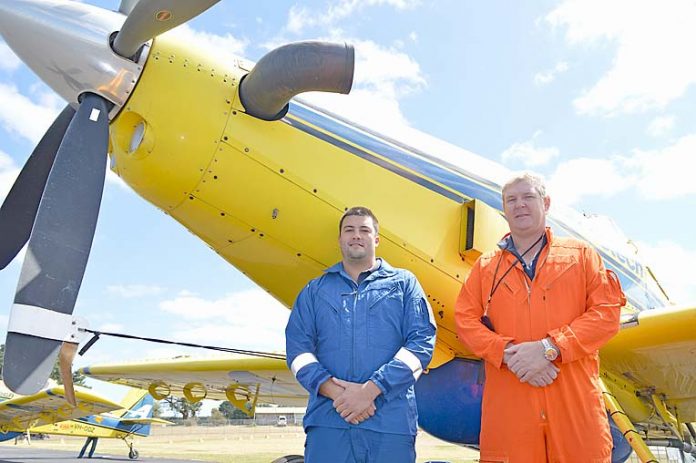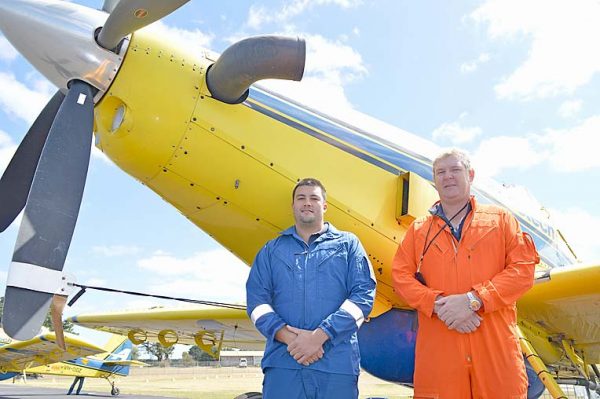

WITH two fire bombing aircraft stationed at Mount Gambier’s airport for the duration of the fire danger season, South East residents can rest assured the Country Fire Service is well-prepared for any eventuality.
The two yellow Air Tractor AT-802 bombers can be seen clearly from Penola Road and can be substituted with another two bombers should the need arise.
CFS State Aviation Operations manager David Pearce told The Border Watch yesterday South Australia has 10 bombers at its disposal in addition to other firefighting aircraft.
“The bombers are a state recourse which we deploy where they are needed most,” he said.
“During extreme conditions and on total fire ban days in the Lower South East an additional two bombers can be allocated to Mount Gambier Airport.
“On these days our first concern will keep people out of harm’s way, but also to protect the Green Triangle’s vast forestry resources.
“The Air Tractor has a 3200 litre fire suppressant carrying capacity, a ground speed of 350kph and can be airborne in less than five minutes.
“It is an impressive tool to support firefighters on the ground.”
During bushfires, pilots have to operate in very stressful environments, often flying in low visibility where the air can be very unstable.
CFS air attack supervisor Phil Richards said in situations like these teamwork becomes critical to achieve a successful outcome.
Mr Richards said the Lower South East Air Operations Team typically followed a five-tiered approach in combating bushfires.
“Intelligence about the fire is gathered to establish an air and ground strategy to coordinate the bombing attack in order to achieve the desired outcomes,” he said.
“Bombers are usually in the air within a few minutes and will attack their targets according to the strategy.
“They are supported by an incident management team on the ground – typically firefighters and those responsible for filling and fuelling the planes.”
Mr Richards said targets were not attacked indiscriminately, but at specific places where chances of success were the highest.
“The strategy means bombers do not necessarily drop their loads on the most fiercely burning areas, where the impact could be limited,” he said.
“Last but not least is the logistics function responsible for organising everything from refilling the aircraft, to food and accommodation for firefighters and other team members.”
Currently on duty at the airport are bomber pilots Chris Holden and David Maclean, who have around 30 years’ combined flying experience.
“It is very rewarding to assist the community in this way,” Mr Holden said.
“I fight fires here during the Australian summers and head off to Cyprus in the winter to do the same there.
“Flying is my passion.”
His words were echoed by Mr Maclean, who has been aerial sheep mustering in the Nullarbor and crop spraying before he ventured into firefighting.
“Depending on the fire, two aerial drops within the first 30 minutes could have it under control,” he said.
“However, land-based firefighters are essential to extinguish the fire and for mopping-up.”





